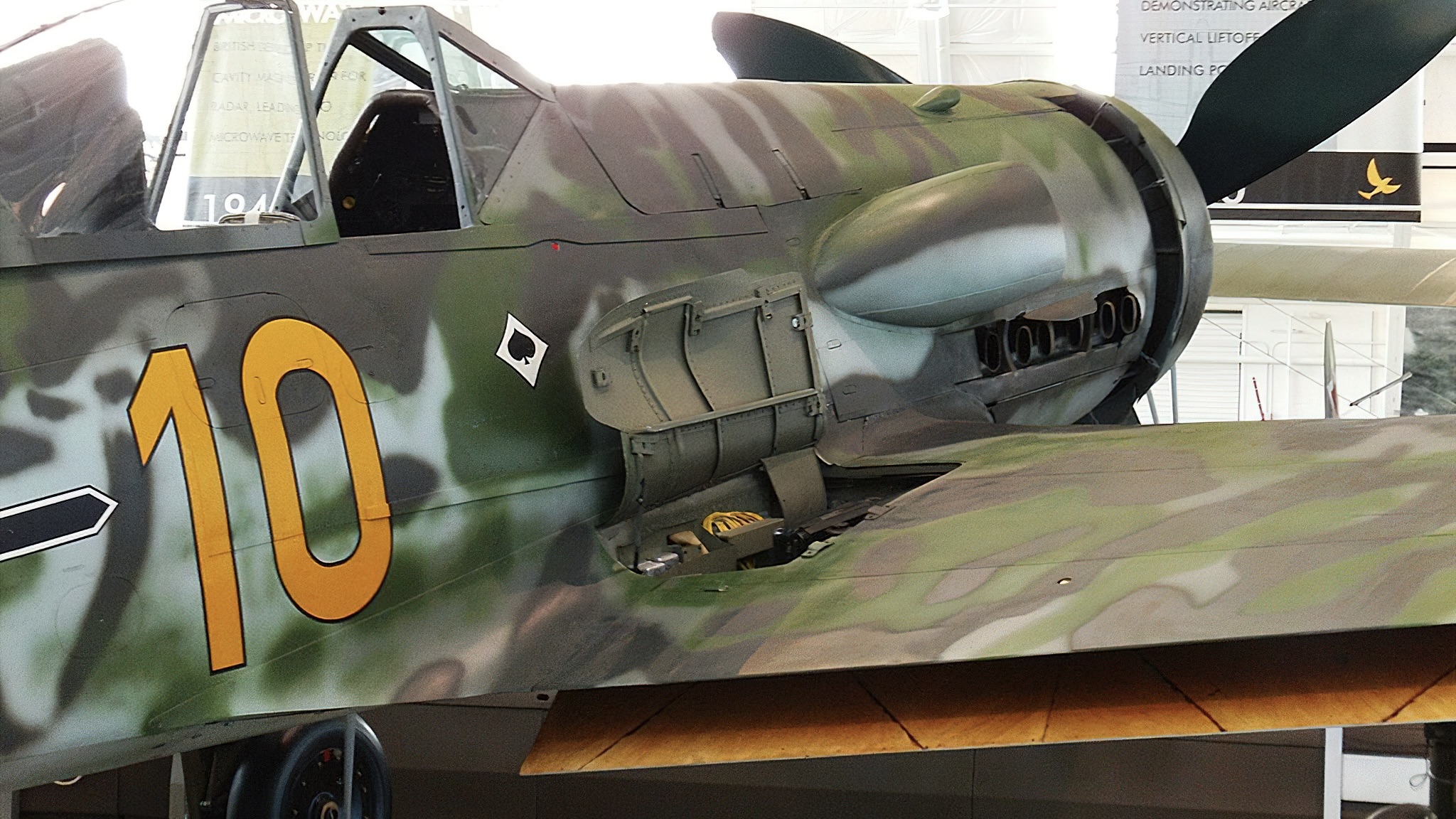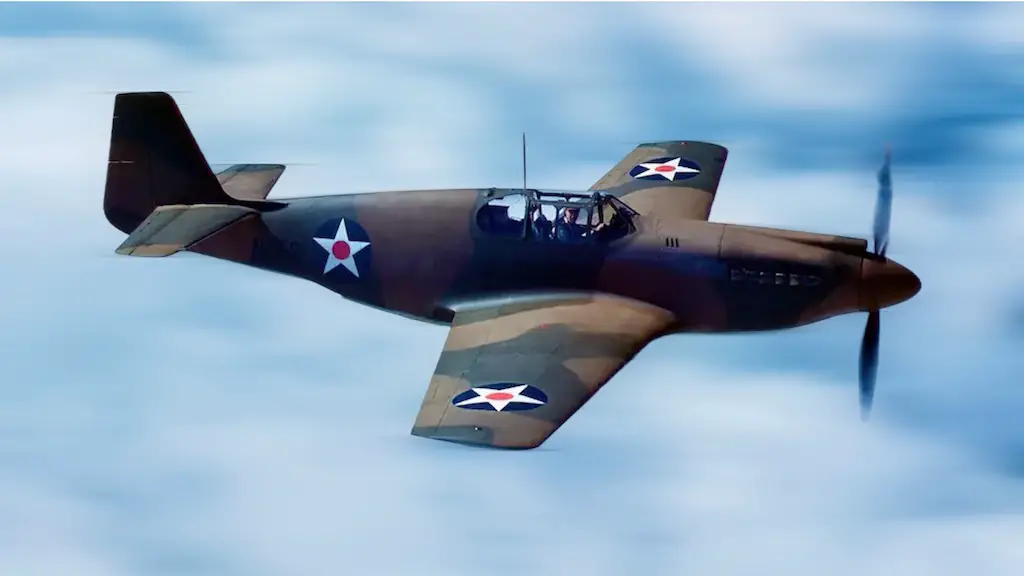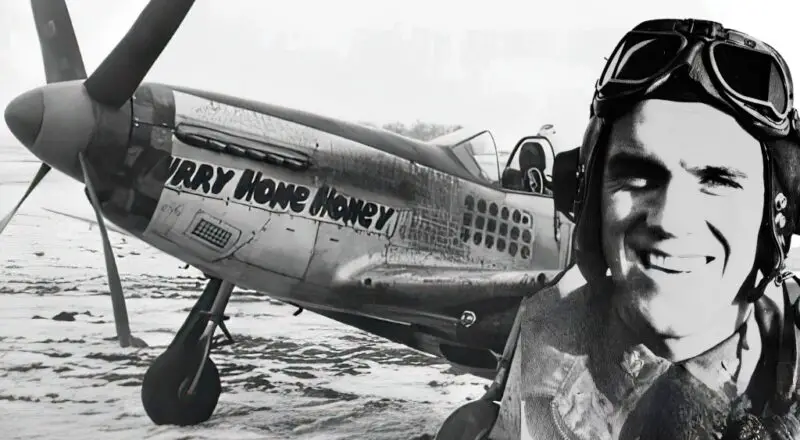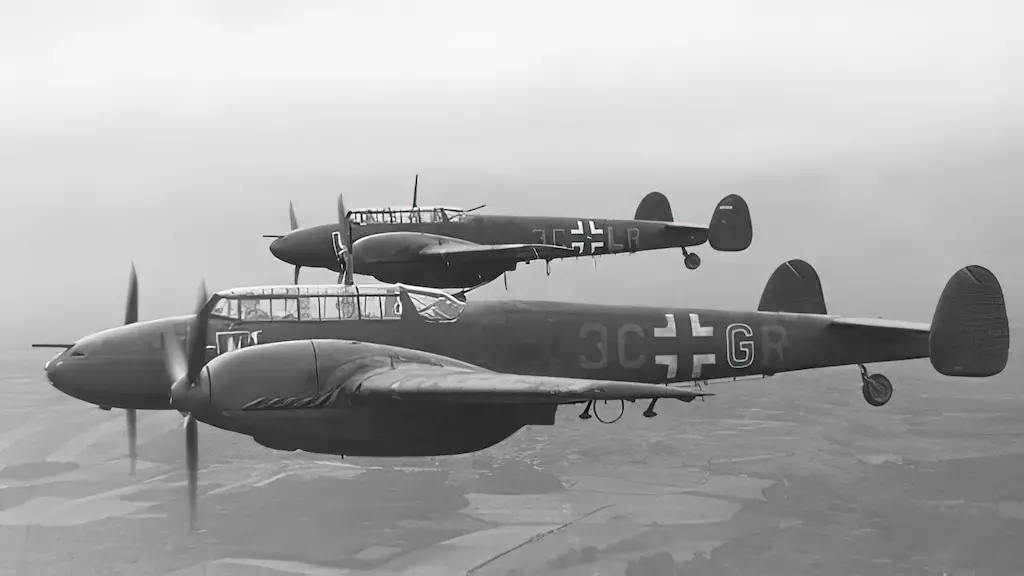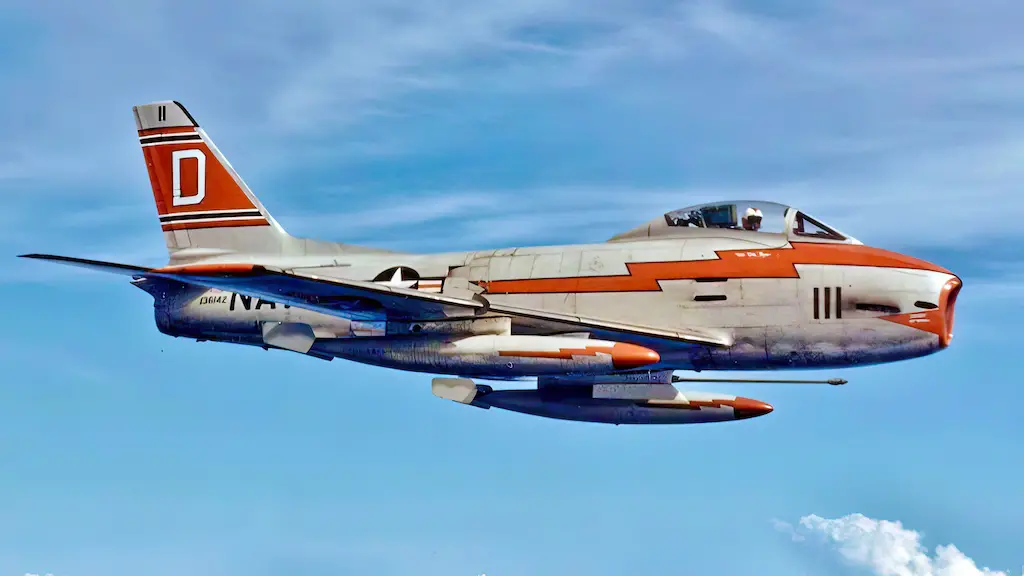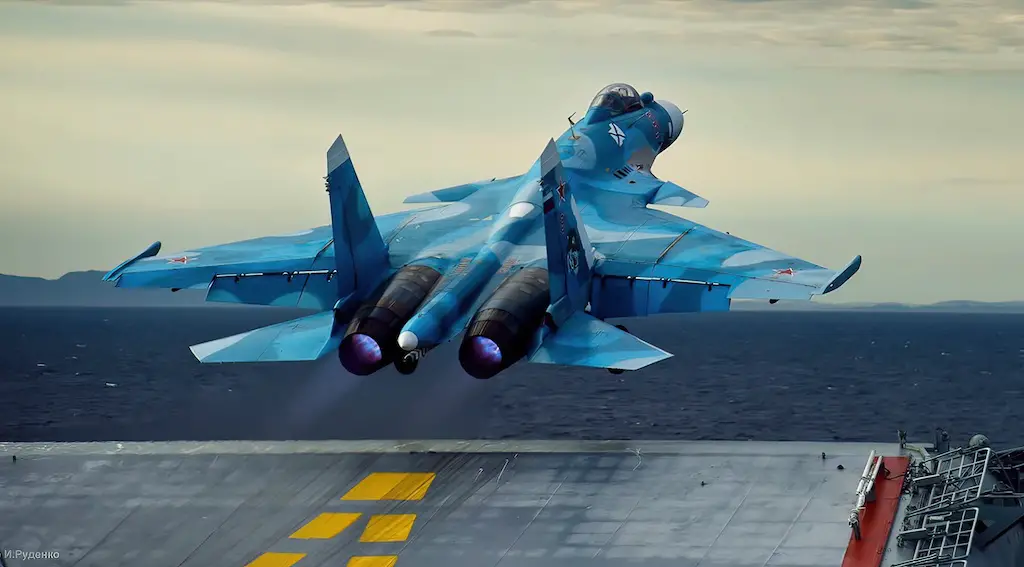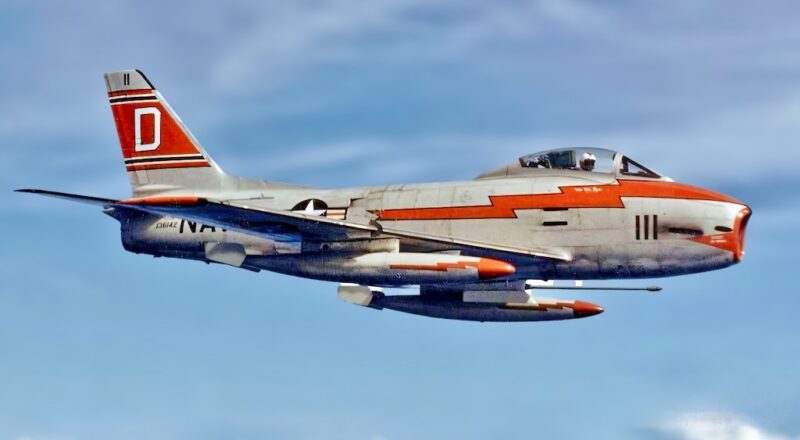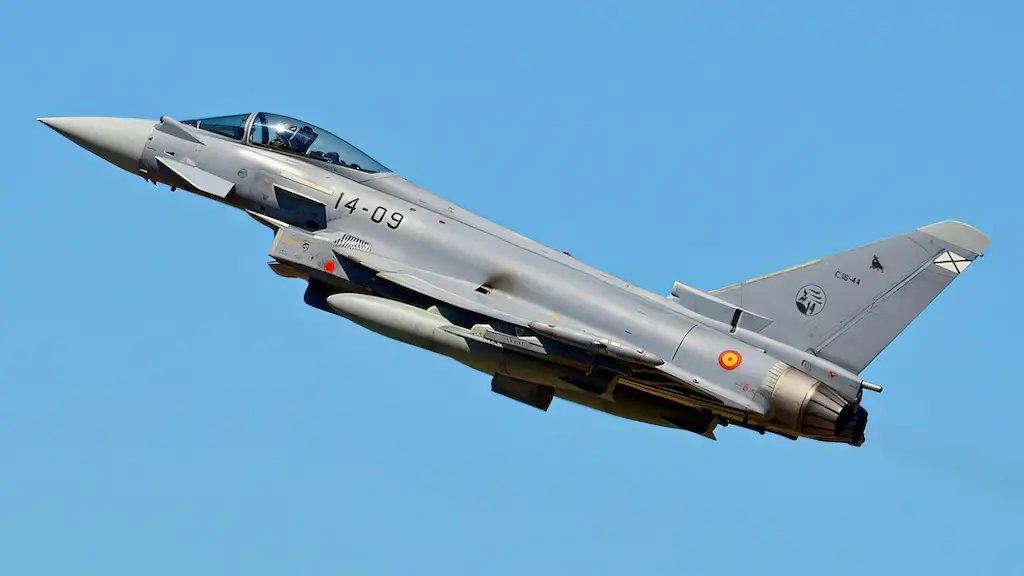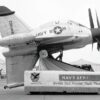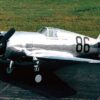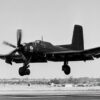Camouflage patterns
While some military aircraft are still painted with camouflage colour patterns today mostly for aesthetic purposes rather than their main use, such patterns are nowhere near as widespread as they were on military aircraft from WWII. Aircraft at that time were often painted in camouflage hues ranging from brown, drab green, olive green, grey, blue, and black. Even in the seemingly counterintuitive colour scheme of British spy planes … pink.
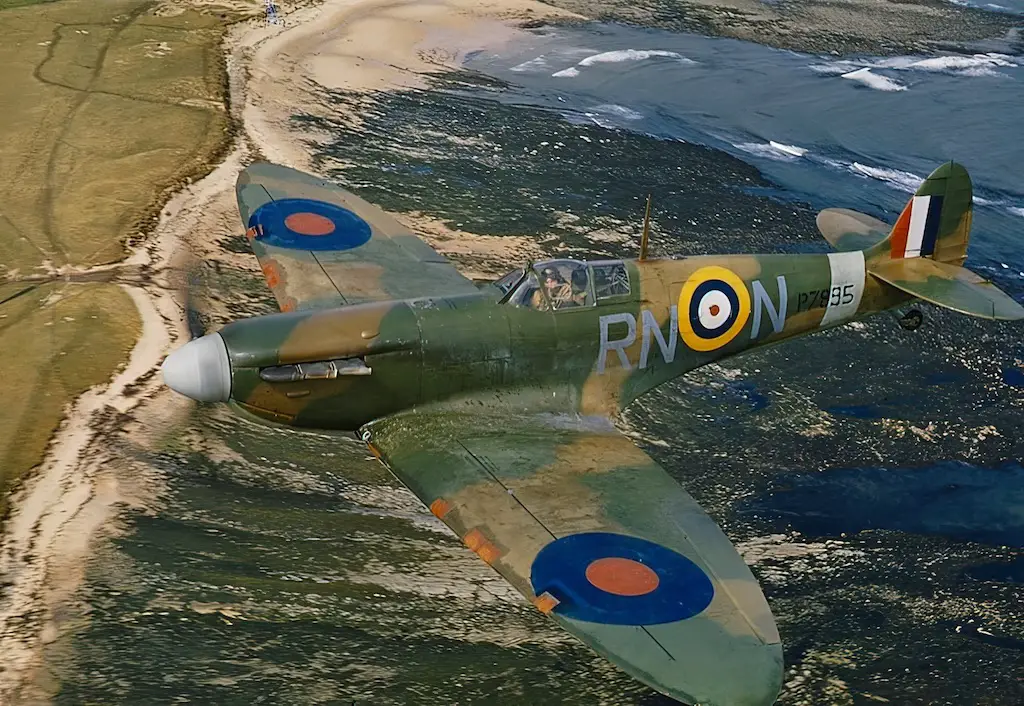
Serving a purpose
Though at first it may seem strange to have coloured an aircraft in anything but its natural metallic colour but it did serve a purpose. When air superiority was hotly contested, they often needed to be protected when they were at their most vulnerable, in an aeroport, grounded.
Military aircraft were expensive investments, costly and time-consuming to produce. Thus an immense value both as assets and targets. Not to mention the time and money spent training the pilots. An enemy aerial bombing raid over an airfield or airbase where dozens of planes could be targeted and destroyed could be heavily crippling to any air force.
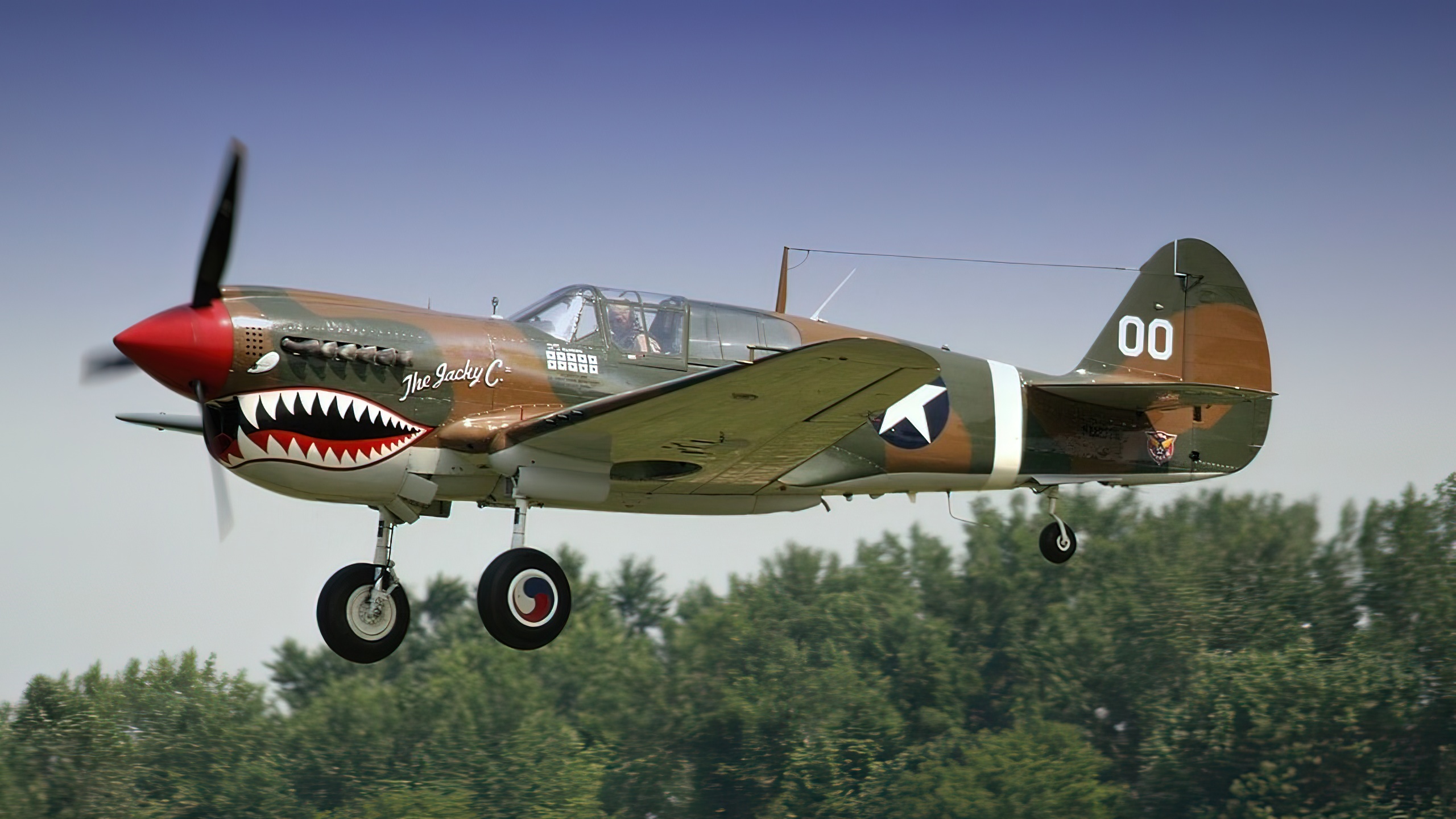
Invisible…almost
Bombs during that era were guided by what the human eye was capable of seeing, targeting, and then firing at. And obviously, you can’t fire at what you can’t see. Thus, an effectively camouflaged aircraft on the ground could seem almost invisible unless the attacking pilot was flying rather low to the ground. But this flight maneuver would put him at risk from anti-aircraft defences. Each nation fighting in the war had its specific camouflage patterns for the various types and models of aircraft they flew.
Their undersides were painted in tones that would blend in more with the sky when seen from the ground: flat tones of grey or blue, rather than the disruptive patterns of the tops of the planes.
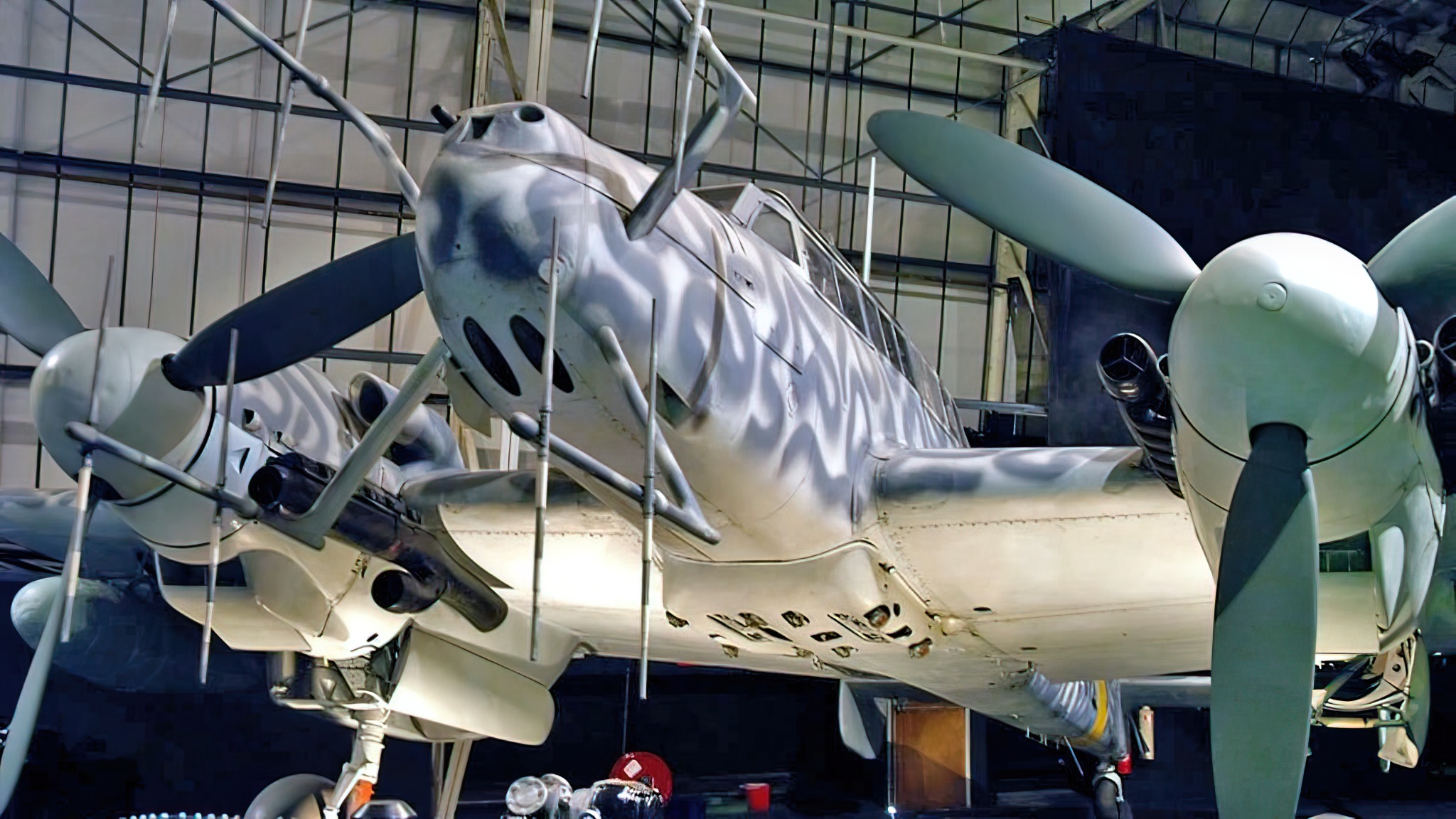
Pink!?
Various models of bombers, which often operated at night were sometimes painted differently than fighters. Their undersides, and in some cases their entire bodies, would be painted black to provide camouflage against the night sky. As the war progressed, however, some bombers had their undersides painted in lighter hues, to blend in with the glow of light pollution or large searchlights from the cities below them.
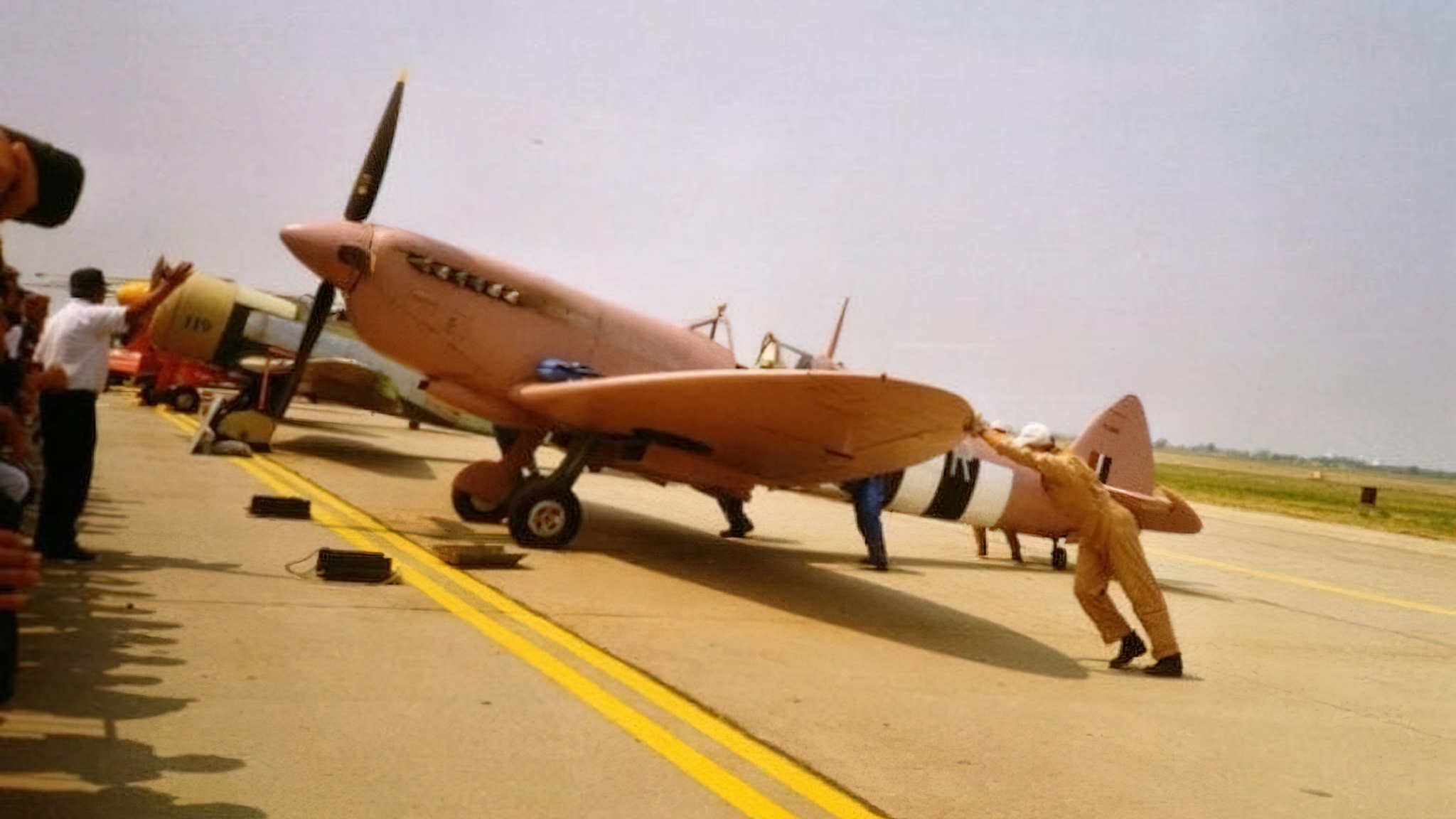
Perhaps the most interesting camouflage colour scheme was that of the British Royal Air Force’s photo-reconnaissance Spitfire planes, which were painted pink. Not neon pink, of course, but a pale and subtle hue of pink. These unarmed planes were equipped with cameras and were required to quickly scout the enemy territory. The pink tone served as an ideal camouflage against the different shades of the dawn or dusk skies. Undeniably, they were fairly invisible beyond 300-600 feet under the right conditions. This provided ample time to get in and out of hostile territory virtually undetected.
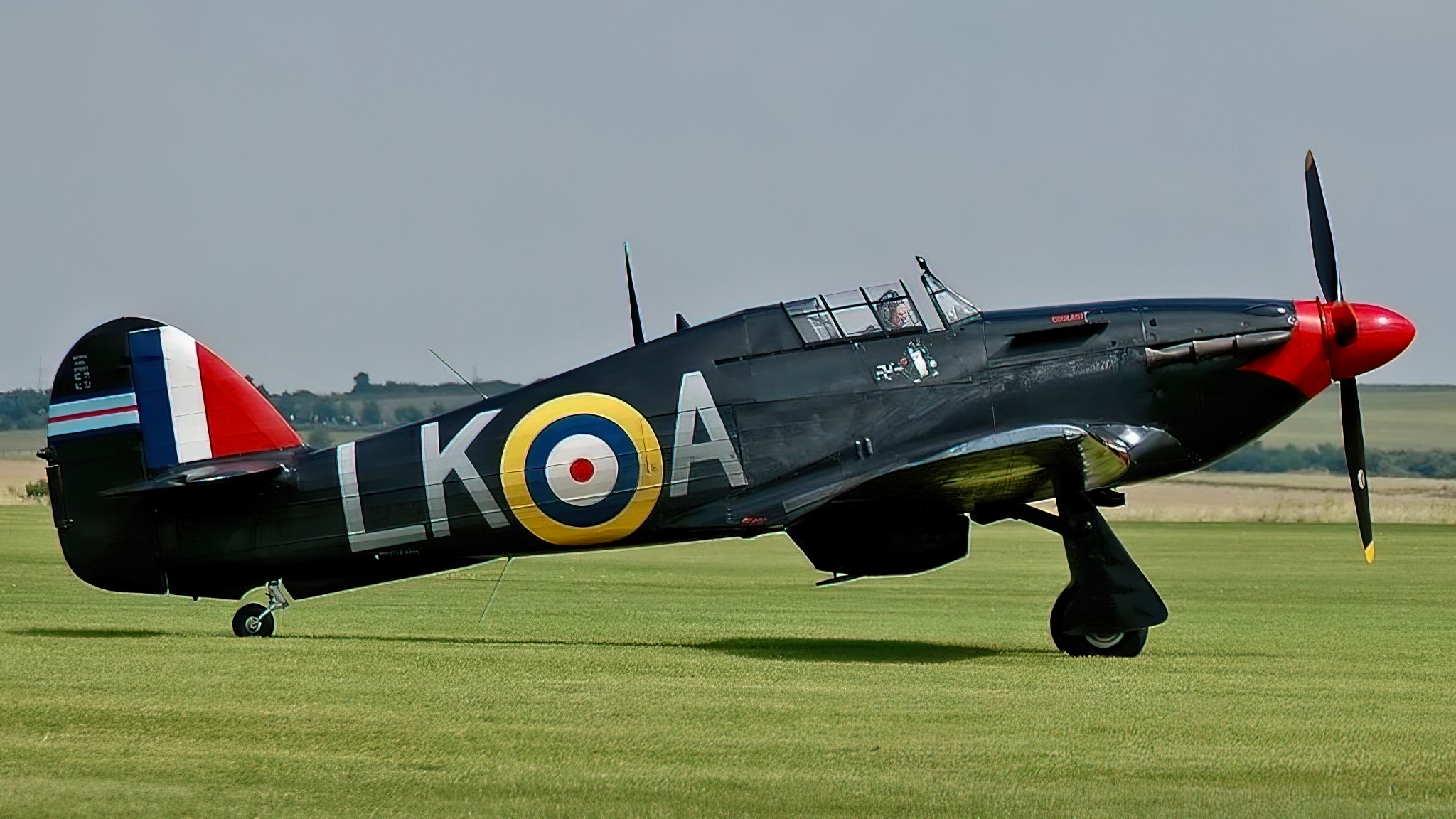
Simpler
In the later years of the war, attitudes toward camouflage paint on planes began to change. This was largely due to the Allies achieving definitive air superiority, after which they began to paint their planes more simply. Sometimes even pull away from painting at all to save on costs and supplies. This particularly applied to U.S. aircraft, many of which were completely stripped of paint or not painted at all and were covered with only a coat of wax or clear lacquer.
There was an advantage to not painting an aircraft: they became lighter. Not by a great degree, but for a small fighter, a weight loss of a few dozen pounds equated to faster speeds in the air, greater manoeuvrability, and the capability to fly farther. It could also cause less heating as paint, especially darker hues, were and are still known to preserve heat.
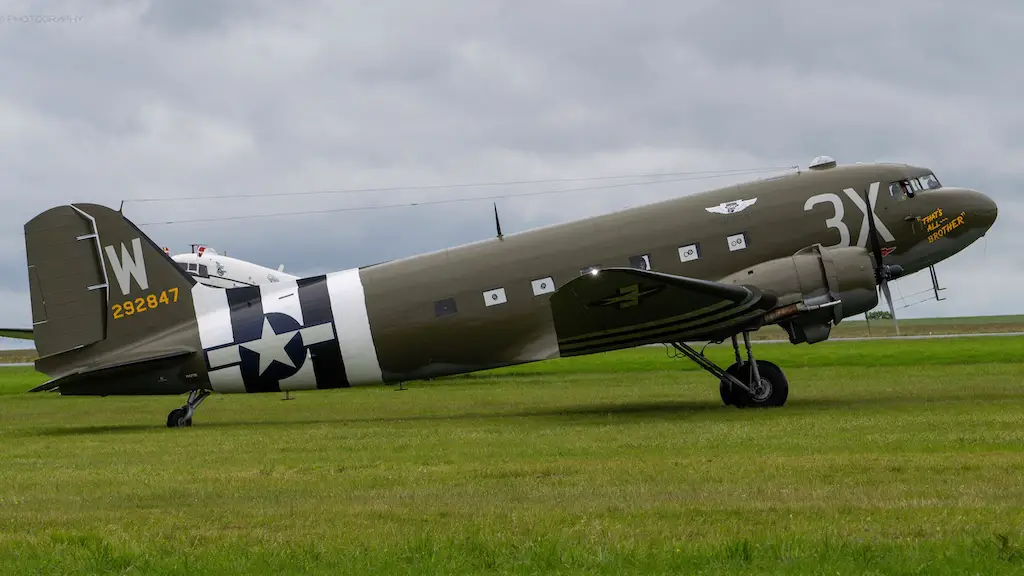
All about weight
On larger planes, particularly the biggest bombers with a large surface area to cover, forgoing a coat of paint could save a few hundred pounds (in mass). This meant that more weight could be spared for a larger payload of bombs. By the end of the war, a large portion of American aeroplanes had either had their paint coating removed or had been finished unpainted.
While camouflage paint on military aircraft did generally fall out of fashion after the Second World War, it was never completely abandoned. Even though advanced technology, the likes of heat-seeking missiles and thermal infrared imagery rendered camouflage somewhat obsolete, its usefulness in terms of disguising aircraft on the ground from human eyes above remains now as it was during its heyday.
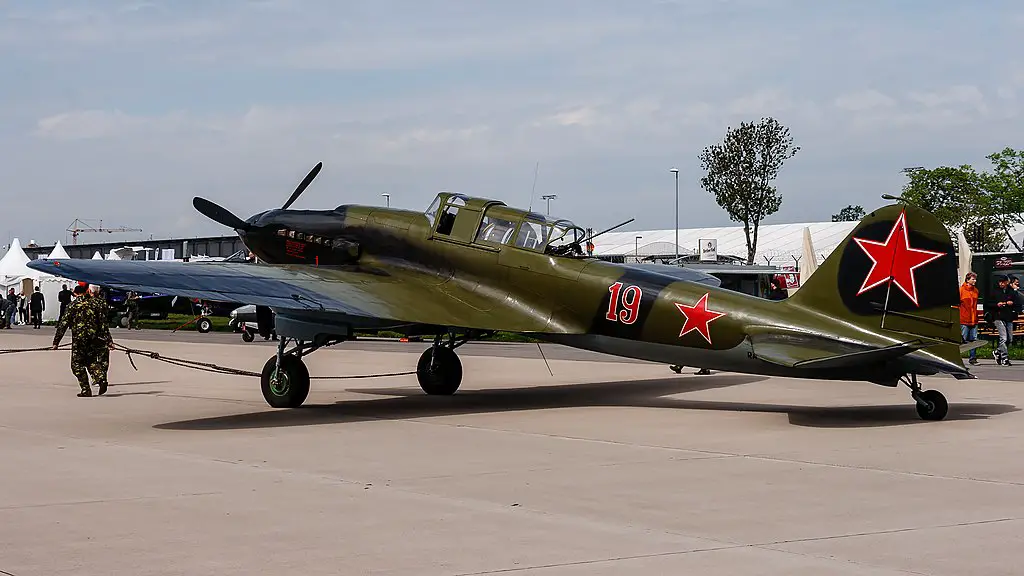
Computer controlled
Even with the types of advanced, technologically-enhanced passive camouflage methods that are employed today, such as computer-controlled active camouflage panels, multi-spectral camouflage, and digital camouflage, the usefulness of good old camouflage paint schemes to fool the human eye is still used on many military aircraft across the world. Some also just look pretty darn cool!
